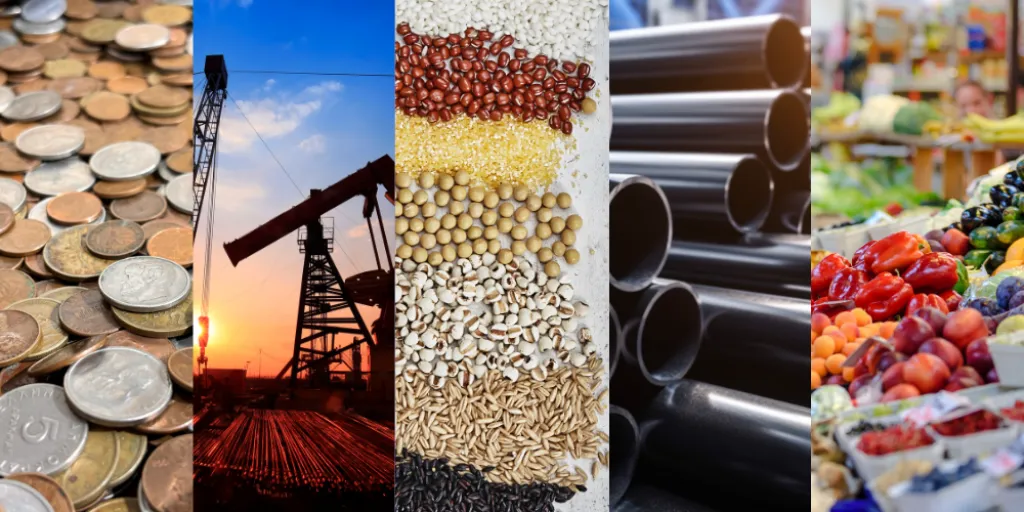The Role of Commodities in Portfolio Diversification and Risk Management

In an increasingly volatile global market, investors are constantly searching for ways to protect their portfolios from shocks, preserve purchasing power, and generate stable long-term returns. One of the most effective — yet often underused — tools for this purpose is commodities.
Commodities such as gold, crude oil, natural gas, agricultural products, and industrial metals have historically played a powerful role in portfolio diversification. Their unique price drivers, low long-term correlation with stocks and bonds, and ability to hedge inflation make them a valuable component in a well-balanced investment strategy.
This article explores how commodities help manage risk, reduce volatility, and strengthen portfolio resilience, particularly in uncertain economic cycles.
1. Why Commodities Matter in Modern Portfolios
Traditional portfolios generally rely on equity and debt instruments. However, as seen in recent decades, periods of inflation, geopolitical disruptions, and supply-chain shocks can undermine both.
Commodities offer a distinct advantage because their price movements come from factors such as:
Supply-demand dynamics
Inflation trends
Weather cycles
Geopolitical tensions
Government policies
Currency fluctuations
Since these factors often behave differently from corporate earnings or interest rates, commodities provide non-correlated performance that strengthens overall portfolio durability.
2. Commodities as an Inflation Hedge
One of the strongest arguments for including commodities in a portfolio is their ability to protect against inflation.
How commodities hedge inflation:
When inflation rises, the prices of goods and raw materials usually rise too.
This increases the value of commodities such as oil, metals, and agricultural products.
Investors holding commodities benefit from this price appreciation, offsetting the erosion of purchasing power in traditional assets.
Gold as a classic example
Gold has long been considered a safe-haven asset. Historically, gold prices tend to increase when:
Inflation is high
Currencies weaken
Central banks adopt loose monetary policy
Global uncertainty rises
This inverse relationship with fiat currencies makes gold a strong inflation hedge.
3. Low Correlation With Stocks and Bonds
Diversification works when different assets react differently to the same economic event.
Commodities typically show:
Low or negative correlation with equities
Low correlation with government or corporate bonds
For instance:
During stock market downturns caused by inflation or supply shocks, commodity prices may rise.
When interest rates fall and equities soar, commodities may stagnate — but this lack of correlation reduces portfolio volatility.
What this means for investors
Adding commodities smoothens overall returns by ensuring that not all parts of the portfolio move in the same direction at the same time. This reduces drawdowns and improves long-term risk-adjusted returns.
4. Risk Management Through Diversification
A diversified commodity strategy enhances portfolio resilience.
Key ways commodities reduce portfolio risk:
Economic Cycle Protection
Commodities thrive in different phases of economic cycles compared to equities.Geopolitical Stability Buffer
Commodity prices often respond immediately to global events, giving investors a protective hedge.Currency Depreciation Protection
When local currencies weaken, commodity prices (typically priced in USD) naturally adjust upward.Crisis Hedge
During economic or financial stress, commodities like gold, silver, and energy often outperform.
5. Ways Investors Can Access Commodities
Investors today can gain exposure to commodities through multiple routes:
1. Gold and Silver
Sovereign gold bonds (SGBs)
Gold ETFs
Physical gold
Silver ETFs
2. Commodity ETFs and Index Funds
These track commodity indices such as energy, metals, or agriculture.
3. Futures and Options
For sophisticated investors looking for direct exposure.
4. Commodity-Oriented Stocks
Mining companies
Oil & gas producers
Agricultural producers
While these aren’t pure commodities, they offer partial exposure with equity-like characteristics.
5. Multi-asset or commodity mutual funds
These offer diversification without direct futures trading.
6. Considerations and Risks
While commodities offer many benefits, investors should also understand the risks:
Higher volatility than traditional assets
Global uncertainties can cause rapid price swings
Storage costs (for physical commodities)
Leverage risks in futures trading
Regulatory and currency risks
A balanced approach — typically 5–15% of a portfolio depending on risk appetite — is often recommended by financial advisors.
7. The Long-Term Role of Commodities in a Portfolio
Commodities strengthen portfolios in three major ways:
Protect purchasing power during inflationary cycles
Reduce volatility through low correlation with equities
Enhance long-term stability via diversification
In times of rising inflation, geopolitical tension, and global supply-chain volatility, commodities become even more relevant.
Conclusion
Commodities play a vital role in achieving a well-diversified and resilient investment portfolio. Their ability to hedge inflation, move independently of stocks and bonds, and offer unique growth opportunities makes them an essential component for long-term risk management.
Investors who strategically incorporate commodities into their portfolios are better positioned to withstand market shocks, preserve wealth, and achieve more stable long-term returns.









